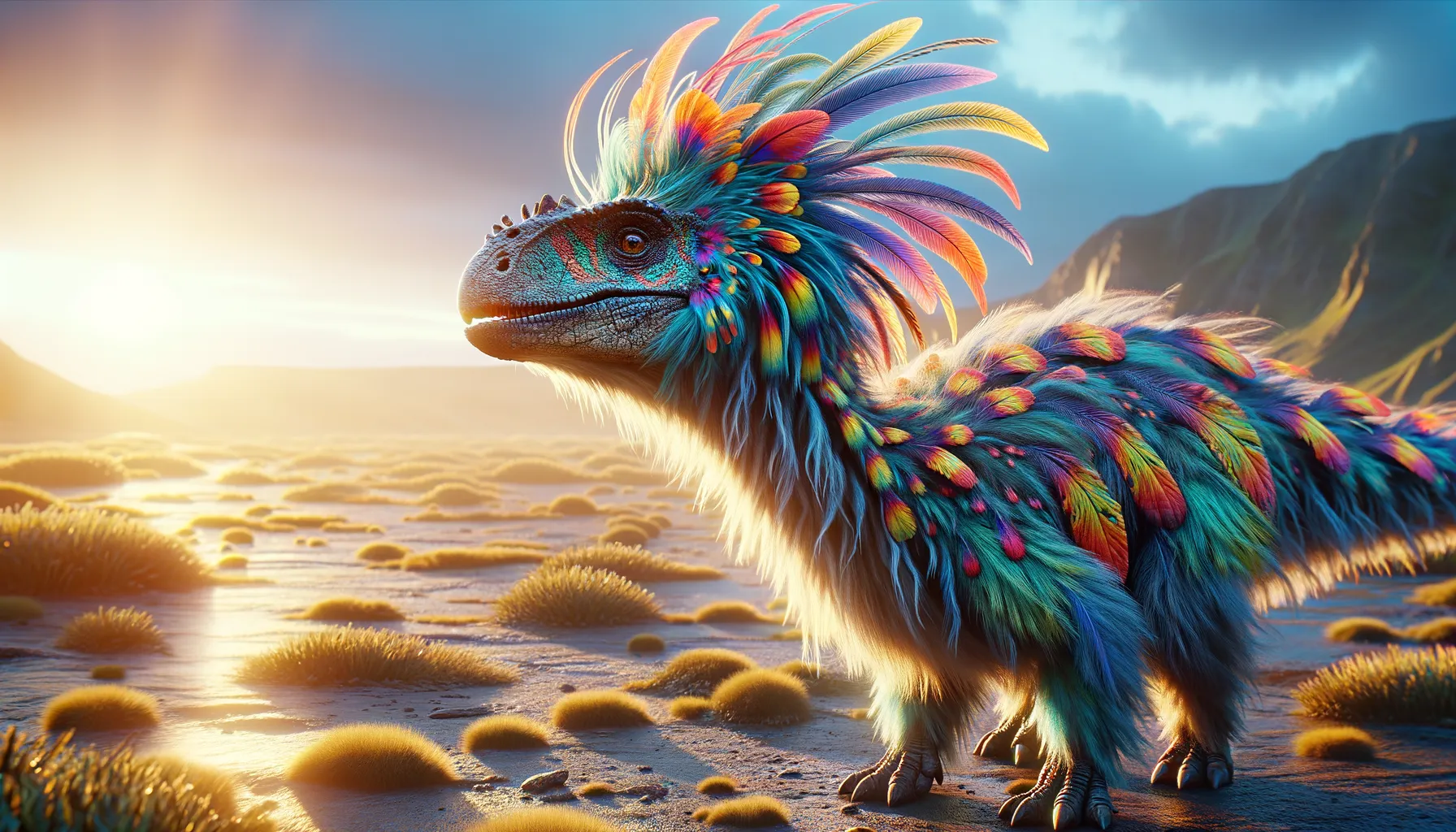
Caihong
A rainbow-plumed marvel of ancient times.
Period
Cretaceous
Length
About 0.5 meters long.
Height
Approximately 0.3 meters tall.
Weight
Around 2 kilograms.
Caihong juji was a small, feathered dinosaur known for its vibrant, rainbow-like plumage found in northeastern China. This dinosaur lived during the Late Cretaceous period, around 161 million years ago. Its unique iridescent feathers are believed to have played roles in display and mating, similar to today's birds. Caihong offers fascinating insights into the evolution of color and feathers in dinosaurs.
Diet
Caihong was an omnivore. It likely fed on small animals, insects, and some plant material, utilizing its sharp teeth and agile movements to catch prey.
Hunting
Caihong had a keen sense of sight and quick reflexes, which aided in hunting small prey. It may have hunted alone, relying on stealth and surprise to catch insects and small animals.
Environmental challenges
Caihong lived in a forested area with seasonal changes, having to adapt to varying temperatures and vegetation availability. Survival depended on finding adequate food sources despite these seasonal shifts. Predators posed another challenge, requiring vigilance and quick escape tactics.
Speed
Likely agile, able to move quickly.
Lifespan
Estimated to be around 10-15 years.
First discovery
Discovered in Liaoning Province, China in 2018.
Fun Facts
- Caihong is a dinosaur whose name means 'rainbow' in Mandarin, named for its colorful feathers.
- This dinosaur lived about 161 million years ago, during the Jurassic period.
- Caihong was about the size of a modern-day duck, making it one of the smaller dinosaurs.
- Its fossil was discovered in northeastern China in 2014 and is incredibly well-preserved.
- Caihong's feathers suggest it may have been capable of gliding, due to their similarity to those of modern birds.
- The dinosaur had a bony crest on its snout, which is quite unique among feathered dinosaurs.
- Caihong's discovery provides important clues about the evolution of iridescent feathers.
Growth and Development
Caihong hatched from eggs and underwent significant changes as it grew, with its feathers developing more iridescent properties over time. Juveniles likely stayed close to adult members for protection and care. As they matured, the brilliant coloration of their feathers would have become more pronounced.
Habitat
Caihong inhabited a lush forest region, rich in biodiversity. The dense vegetation provided cover from predators and opportunities for foraging. Seasonal climate variability would influence the availability of resources within this habitat.
Interaction with other species
Living in a biodiverse area, Caihong interacted with various other species, including both prey and potential predators. Its colorful plumage might have facilitated communication among its species, enhancing social interactions. It also coexisted with other small dinosaurs and early mammalian species, often competing for similar resources.
Natural lifespan
Caihong is believed to have lived up to 15 years in the wild.
Reproduction
Caihong likely reproduced by laying eggs, similar to modern birds. Nests would have been strategically located to protect from predators. Parental care may have been involved in guarding eggs and helping hatchlings in the early stages of life.
Social behaviour
Caihong might have exhibited some level of social behavior, possibly forming small groups or family units. Display through their colorful plumage could have played a role in courtship and establishing social hierarchies. Vocalizations and physical displays might have facilitated communication.
Fossil locations
The fossils of Caihong have been discovered in the Jianchang County, Liaoning Province of China. Such areas are significant for yielding numerous well-preserved specimens of feathered dinosaurs. These fossils are crucial for understanding both the diversity of species and the climatic conditions of that era.
